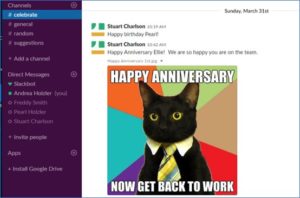If you have a small business, you already have a million things to lie awake worrying about. Get ready for another: infectious and contagious diseases are on the rise. It has been reported that the Florida Department of Health has confirmed over 1,100 Hepatitis A (HEP A) cases in 2019 so far. According to the state epidemiologist, HEP A is a very hardy virus, that spreads from person to person, and can live on surfaces for long periods of time. It can be contracted when someone touches an infected surface and puts their hand in their mouth. What does your small business need to know about handling an employee that reports a contagious disease? Did you know that a sizable percent of people do not wash their hands after going to the bathroom.
Here are some important topics related to contagious diseases at work:
1) Are there REPORTING obligations? If an employer receives credible information (or an employee self-report) about a contagious disease, you are encouraged to contact your local county health department for guidance and response suggestions. For instance, Pinellas County Health Department provides current news updates and protection guidance. If your business is food related or inherently involves a higher risk of exposure to infectious contagion (medical, sanitation, drug treatment or homeless facilities), there are specialized regulations that apply to your workplace that are beyond the scope of this article.
2) Are there LEGAL IMPLICATIONS for the employee with an illness? Yes, if you have 15 or more employees, you need to comply with the Americans with Disabilities Act (ADA). Infectious diseases can be eligible for ADA protection if they result in chronic or permanent disability. Hepatitis A and Measles usually do not present long-term complications, so there may be some question about the application of the ADA (or other similar local ordinance). However, we think that showing compassion and respecting their privacy (if possible) are important. Your business can also consider accommodations, such as a leave of absence. But, even if the ADA applies to these serious medical conditions, due to the highly contagious nature of the conditions (spread through casual contact), there is likely a significant “direct threat” to the health of other employees. Check with a medical expert, or the county health department for their recommendations.
3) Are you taking PREVENTIVE actions? While you can’t control every terrible thing that “might” happen, we guarantee your company will come out of ANY situation better if you have demonstrated a commitment to prevention. Provide an informational email or poster explaining the transmission, symptoms, and prevention of common contagious diseases. Keep restrooms clean, equipped with hot water and antibacterial soap. Do not encourage sick employees to come into the workplace. Consider offering information about vaccinations to employees (requiring vaccinations may be possible but merits an attorney consultation).
4) Is there an EMPLOYEE NOTIFICATION obligation? The Occupational Safety and Health Administration (OSHA) requires that employers provide a safe and healthy workplace for employees and a workplace free from recognized hazards. If you are aware of a contagious or communicable disease that may pose a health risk to employees or the public, OSHA would require notification of employees, supervisors and the affected employee. HR should seek to confirm the needed information and obtain sufficient facts about the condition and employee affected to make effective decisions. If the employer only has a suspicion of infectious disease event, it must still take reasonable actions to investigate the situation, discuss with the affected employee and make proper decisions to protect everyone’s safety. Consult with legal counsel to ensure that everyone’s rights are protected.
HR should be expected to provide leadership in these situations. There is a delicate balance between an affected employee’s rights of privacy and the company’s obligations to protect co-workers from serious illness risks. Before an event occurs, it is good to assess the risks for contagious disease, provide proactive communication about disease prevention and prepare a step-by-step process for how to handle a contagious disease in the workplace, should it arise. If you have questions, give us a call.










